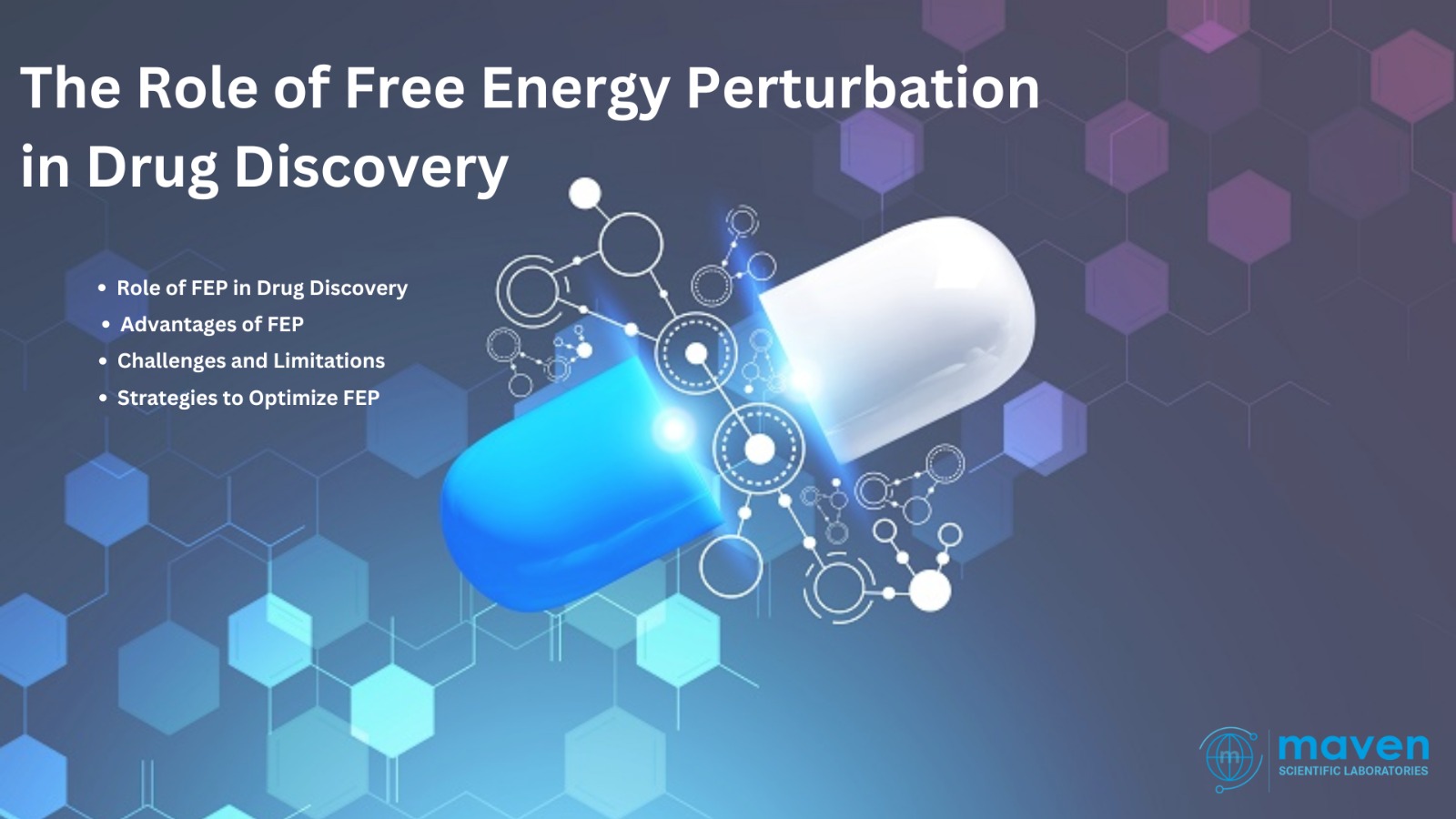The Role of Free Energy Perturbation in Drug Discovery
August 30, 2024
Introduction
Drug discovery is a multifaceted and lengthy process aimed at identifying and optimizing compounds that can effectively treat various diseases. A significant hurdle in this process is the accurate prediction of binding affinities between small molecules and their target proteins. Free Energy Perturbation (FEP) has emerged as a transformative computational technique, enhancing the ability to estimate these binding free energies reliably.
What is Free Energy Perturbation?
FEP is a sophisticated molecular simulation method that quantifies the difference in free energy between two states, typically the bound and unbound configurations of a protein-ligand complex. This technique involves simulating the gradual transition from one state to another, allowing researchers to calculate the free energy difference effectively. By leveraging statistical mechanics, FEP incorporates both enthalpic and entropic contributions, providing a comprehensive view of the binding process.
Role of FEP in Drug Discovery
FEP plays several critical roles in the drug discovery process:
- Lead Optimization: FEP facilitates the optimization of lead compounds by predicting how chemical modifications can impact binding affinity.
- Binding Affinity Prediction: This method allows for precise predictions of the binding affinities of small molecules to their target proteins, aiding in the identification of promising candidates.
- Selectivity Prediction: FEP can evaluate the selectivity of lead compounds for their intended target over potential off-target proteins, which is crucial for minimizing side effects.
- Insights into Mechanism of Action: By analyzing binding interactions, FEP can provide valuable insights into the mechanisms of action of lead compounds, guiding further optimization efforts.
Advantages of FEP
FEP offers several advantages that make it an attractive tool in drug discovery:
- Accuracy: It provides highly accurate estimates of binding free energies, which are essential for reliable lead optimization and selection.
- Speed: Compared to traditional experimental methods, FEP is significantly faster, enabling rapid iterations in lead optimization.
- Cost-Effectiveness: By reducing the need for extensive experimental validation, FEP can lower the overall costs associated with drug development.
Challenges and Limitations
Despite its advantages, FEP faces several challenges:
- Computational Resources: The method requires substantial computational power, which can be a barrier for some research teams.
- Force Field Accuracy: The reliability of FEP results is heavily dependent on the accuracy of the force fields used in simulations, which can vary.
- Complexity of System Setup: Preparing FEP simulations necessitates a high level of expertise and can be time-consuming, which may hinder its widespread adoption.
- Ligand Similarity Requirement: FEP is often limited to similar ligands, which can restrict its application in early-stage hit-to-lead processes. However, once a new chemical series is identified, it can serve as a template for rapid computational exploration of related compounds.
- Knowledge of Scripting: Many FEP interfaces require command-line operation, necessitating a basic understanding of coding for effective implementation.
Strategies to Optimize FEP
To overcome the challenges associated with FEP, several strategies can be employed:
- User-Friendly Interfaces: Developing graphical user interfaces can reduce reliance on scripting and make FEP more accessible to researchers.
- Enhanced Computational Resources: Utilizing high-performance computing can significantly accelerate FEP calculations and improve efficiency.
- Training and Expertise Development: Providing training for researchers on FEP methodologies can enhance the accuracy and reliability of results.
- Benchmarking and Retrospective Studies: Conducting retrospective assessments of FEP accuracy can help refine methodologies and improve predictive capabilities.
Conclusion
FEP has significantly advanced the field of drug discovery by offering a robust framework for estimating binding free energies. Its capabilities in predicting binding affinity, selectivity, and mechanisms of action make it an indispensable tool in lead optimization and selection. While challenges such as computational demands and setup complexity persist, ongoing advancements in FEP methodologies promise to enhance its applicability and efficiency in drug discovery, potentially leading to the development of more effective and safer therapeutic agents. By addressing the limitations and implementing strategies to optimize its use, FEP can continue to play a crucial role in the future of pharmaceutical research and development.


Post a comment